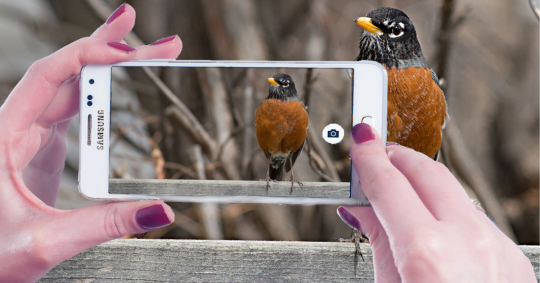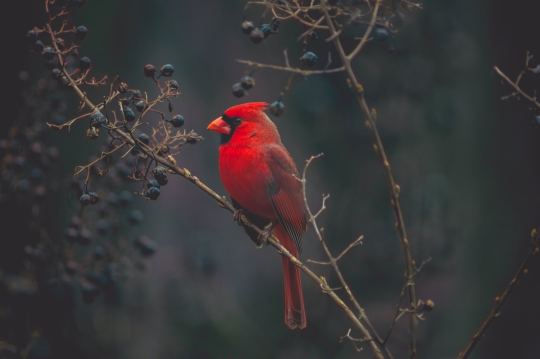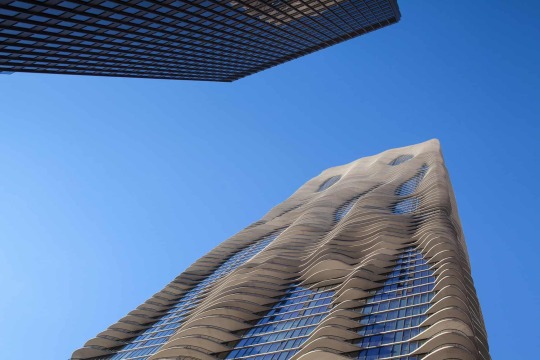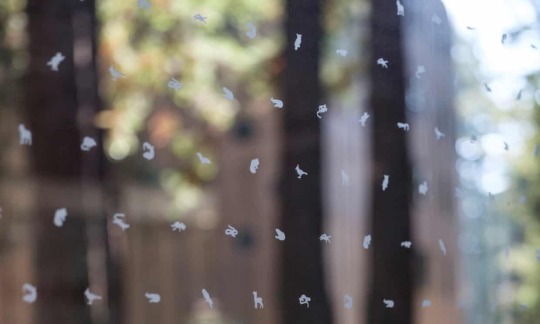#Bird Species Migration
Text
#Bird Migration Routes#Avian Journeys#Birdwatching Adventures#Discover USA Birds#Ornithology Exploration#Bird Species Migration#Nature Travel#Birding Hotspots#Wildlife Migration#Bird Conservation#backyard birds#birdwatching#birdphotography#birds#birding#ornithology#birdlovers#bird
0 notes
Text
the thing no one tells you about birding is that you start developing comfort species. like comfort characters but for birds. and when it's not the right time of year for them you'll be sad because your comfort bird isn't here
#ramblings#birding#birds#IT'S SO. AUGH#i get unsettled when a species that's not in season shows up#but when my favorite birbs aren't in season I GET SAD#forlornly gazing into the distance in the middle of summer. where are my beloved juncos#the white-throated sparrow.. my comfort bird that shows up twice a year and no other time#it's just the migration they'll be back in a bit i tell myself. but i'm so sad they're not here!!!! where are my friends!!!!!!
23 notes
·
View notes
Text

sanderling (calidris alba) in summer plumage, ireland
#charadriiformes#scolopacidae#calidris#sanderling#birds#shorebirds#birdwatching#bird photography#display flight#every time i see a summer plumage sanderling i think it's another species#they look so pale in winter with their white and light grey#then they turn into all these rusty browns in summer...#either way they are possibly the cutest shorebird around :]#these fellas were fueling up before their migration..safe journey lil guys#come back to ireland for the winter <3
2 notes
·
View notes
Text
I have already banded 40% of my total from last year... I have been banding for four days out of a 6-week season...
On another note-- Dear God why are there so many House Wren??
#dont get my wrong Im stoked to see how the year goes#this is still a 'slow' station compared to where I first started#but holy shit 70 birds in 4 days is A Lot for here#especially when last year my best day was maybe 14?#and Im almost to half the same amount of species as last year#which is cool because migration has barely started!!#personal
10 notes
·
View notes
Text
i would love to sing as loud as i can physically manage right now but there are Conventions
#just me hi#i want to BELT my heart out into the air for no reason in particular except to Do It#/there are many reasons for the desire to be a bird. a couple of them being:#can fly#very small‚ can go pretty much anywhere#every day is a good day if you're a bird (i imagine)#can and will scream for Everything and it sounds very nice#and also can fly#and also their little feather tails‚ i think they're very neat :>#cons of being a bird however:#literal bird brain#no hands#will literally die from having a sippy of dr. peeper#can't read (sub-consequence of bird brain but Still)#can't draw (see last bracket-entry)#E g g#no bread <////////////3#no PASTA or SOUP <//////////33333#3-50 years to live and that's a Gamble depending on the species n environment#and what else. oh yeah and the migration thing. i think i would just die instead hbvdfj#//but yeah i'm waiting for my moment to just Yell lol :)
3 notes
·
View notes
Text
A Symphony of Songbirds: Audubon Day Launches City Nature Challenge
Spring is in the air, and on April 26, 2024, nature enthusiasts and bird lovers alike will have their binoculars and smartphones ready for Audubon Day – a celebration that spreads the wings of opportunity to enjoy the beauty of birds and wildlife. This year, Audubon Day coincides with the kick-off of the 2024 City Nature Challenge, a four-day blitz to discover the diverse wildlife that calls the…

View On WordPress
#April 26#artistic legacy#Audubon Day#Audubon Day events#Audubon&039;s birthday#Audubon&039;s contributions#Audubon&039;s impact#Audubon&039;s insights#Audubon&039;s teachings#avian diversity#binoculars#biodiversity#biodiversity documentation#bird calls#bird conservation#bird identification#bird lovers#bird migration#bird migration patterns#bird songs#bird species#bird species identification#birding adventures#birding community#birdwatching#birdwatching community#birdwatching guides#birdwatching locations#birdwatching tips#celebration
0 notes
Text
A pair of Trumpeter Swan signets with a pair of Common Merganser; Lake Superior at the mouth of the St Mary’s River, Canada; April 21, 2022; logged in the Breeding Bird Atlas
Photography and species identification by Glo O’Brien (Glo Outside Photography)

#bird photography#birds#birding#Breeding bird atlas#Lake superior#canada#common merganser#trumpeter swan#signet#Species at risk#photography#nature#wildlife#avian#avian photography#Natural environment#breeding season#migration#Swan#merganser#spring#april#Glo Outside#Canadian wildlife photographer#Fish and widlife#Natural environment technician#Sault college#School of natural environment#Avian identification#Species identification
1 note
·
View note
Text
I think I now understand why scientists find migratory patterns so fascinating. On my way home I witnessed at least a hundred thousand birds flying together like a long river across the sky. It was so amazing I was lucky I wasn’t the one driving. Like almost the same length the whole way and occasionally a patch flew down for rest on the wires or to the ground for food.
1 note
·
View note
Text
How does one find rare or elusive bird species?
Birdwatching is a popular and enjoyable hobby that involves observing birds in their natural habitat. While many bird species are easy to spot, some are elusive and difficult to find. However, finding rare or elusive bird species can be a rewarding and exciting experience. Here are some tips on how to find rare or elusive bird species.
Continue reading Untitled

View On WordPress
#behavior#birding apps#birding strategy#birdwatching#eBird#elusive bird species#habitat#local birding community#migration patterns#natural world#patience#persistence#rare bird species#respect#safety#technology
0 notes
Text
Reflect for a moment on the millions of quails which annually cross the Mediterranean; and can we doubt that the earth adhering to their feet would sometimes include a few minute seeds?
"On the Origin of Species by Means of Natural Selection, or the Preservation of Favoured Races in the Struggle for Life" - Charles Darwin
#book quote#the origin of species#charles darwin#nonfiction#reflection#quail#migration#mediterranean#mediterranean sea#birds#seeds#questions
0 notes
Text

This is how you get blocked. I am very passionate about my love of hated species and very petty about online bug vitriol.
Reasons mosquitoes are good:
Mosquitoes pollinate
Mosquitoes can repopulate and restore dead wetland because their larvae don't need oxygenated water. A mosquito boom is step #1 in restoring wetland
Mosquitoes drive caribou migrations and prevent overgrazing and overpopulation
Mosquitoes are an unbelievably important food source for birds, amphibians, and predatory insects like dragonflies and diving beetles
Mosquitoes are able to feed on megafauna (like deer), and can move nutrients from the top of the food chain down to the bottom of the food chain without killing megafauna. Mosquitoes allow birds and dragonflies to eat deer, and no deer has to die in the process
2K notes
·
View notes
Text
The four stages of becoming a birder:
🪹Nestling Phase: You start with a casual interest, peeking out of your cozy comfort zone to notice the birds around you.
🐤Fledgling Feats: You spread your wings, equipped with binoculars and guidebooks, ready to explore new habitats and spot diverse species.
🐦⬛Perching Proficiency: Your skills sharpen as you learn to identify birds by their calls, habits, and plumage, and feel a sense of accomplishment with each new sighting.
🦅Masterful Migration: Finally, you soar confidently, traversing landscapes near and far, sharing your passion with others. In the end, the true joy of birding lies in the journey itself—every chirp, flutter, and waddle along the way.
Happy National Go Birding Day!
#monterey bay aquarium#bird nerds 4 life#we always tern up for birdwatching#time to spread our wings and fly#nothing was purchased for this video we legitimately own all the bird stuff#ListenBirdingReallySneaksUpOnYouInYourThirties
2K notes
·
View notes
Text
"Chicago’s 82-story Aqua Tower appears to flutter with the wind. Its unusual, undulating facade has made it one of the most unique features of Chicago’s skyline, distinct from the many right-angled glass towers that surround it.
In designing it, the architect Jeanne Gang thought not only about how humans would see it, dancing against the sky, but also how it would look to the birds who fly past. The irregularity of the building’s face allows birds to see it more clearly and avoid fatal collisions. “It’s kind of designed to work for both humans and birds,” she said.
As many as 1 billion birds in the US die in building collisions each year. And Chicago, which sits along the Mississippi Flyway, one of the four major north-south migration routes, is among the riskiest places for birds. This year, at least 1,000 birds died in one day from colliding with a single glass-covered building. In New York, which lies along the Atlantic Flyway, hundreds of species traverse the skyline and tens of thousands die each year.
As awareness grows of the dangers posed by glistening towers and bright lights, architects are starting to reimagine city skylines to design buildings that are both aesthetically daring and bird-safe.

Pictured: Chicago's Aqua Tower was designed with birds in mind.
Some are experimenting with new types of patterned or coated glass that birds can see. Others are rethinking glass towers entirely, experimenting with exteriors that use wood, concrete or steel rods. Blurring lines between the indoors and outdoors, some architects are creating green roofs and facades, inviting birds to nest within the building.
“Many people think about bird-friendly design as yet another limitation on buildings, yet another requirement,” said Dan Piselli, director of sustainability at the New York-based architecture firm FXCollaborative. “But there are so many design-forward buildings that perfectly exemplify that this doesn’t have to limit your design, your freedom.”
How modern buildings put birds in danger
For Deborah Laurel, principal in the firm Prendergast Laurel Architects, the realization came a couple of decades ago. She was up for an award for her firm’s renovation of the Staten Island Children’s Museum when the museum’s director mentioned to her that a number of birds had been crashing into the new addition. “I was horrified,” she said.
She embarked on a frenzy of research to learn more about bird collisions. After several years of investigation, she found there was little in the way of practical tips for architects, and she teamed up with the conservation group NYC Audubon, to develop a bird-safe building guide.
The issue, she discovered, was that technological and architectural advancements over the last half-century had in some ways transformed New York City – and most other US skylines and suburbs – into death traps for birds...
At certain times of day, tall glass towers almost blend into the sky. At other times, windows appear so pristinely clear that they are imperceptible to birds, who might try to fly though them. During the day, trees and greenery reflected on shiny building facades can trick birds, whereas at night, brightly lit buildings can confuse and bewilder them...

Pictured: A green roof on the Javits Convention Center serves as a sanctuary for birds.
The changes that could save avian lives
About a decade ago, Piselli’s firm worked on a half-billion-dollar renovation of New York’s Jacob K Javits Convention Center, a gleaming glass-clad space frame structure that was killing 4,000-5,000 birds a year. “The building was this black Death Star in the urban landscape,” Piselli said.
To make it more bird friendly, FXCollaborative (which was then called FXFowle) reduced the amount of glass and replaced the rest of it with fritted glass, which has a ceramic pattern baked into it. Tiny, textured dots on the glass are barely perceptible to people – but birds can see them. The fritted glass can also help reduce heat from the sun, keeping the building cooler and lowering air conditioning costs. “This became kind of the poster child for bird-friendly design in the last decade,” Piselli said.
The renovation also included a green roof, monitored by the NYC Audubon. The roof now serves as a sanctuary for several species of birds, including a colony of herring gulls. Living roofs have since become popular in New York and other major cities, in an inversion of the decades-long practice of fortifying buildings with anti-bird spikes. In the Netherlands, the facade of the World Wildlife Fund headquarters, a futuristic structure that looks like an undulating blob of mercury, contains nest boxes and spaces for birds and bats to live.
The use of fritted glass has also become more common as a way to save the birds and energy.
Earlier this year, Azadeh Omidfar Sawyer, an assistant professor in building technology in the Carnegie Mellon School of Architecture, working with student researchers, used open-source software to help designers create bespoke, bird-friendly glass patterns. A book of 50 patterns that Sawyer published recently includes intricate geometric lattices and abstract arrays of lines and blobs. “Any architect can pick up this book and choose a pattern they like, or they can customize it,” she said.

Pictured: The fritted glass used in Studio Gang’s expansion of Kresge College at the University of California, Santa Cruz, depicts the animals in the local ecosystem.
Builders have also been experimenting with UV-printed patterns, which are invisible to humans but perceptible to most birds. At night, conservationists and architects are encouraging buildings turn off lights, especially during migration season, when the bright glow of a city skyline can disorient birds.
And architects are increasingly integrating screens or grates that provide shade as well as visibility for birds. The 52-floor New York Times building, for example, uses fritted glass clad with ceramic rods. The spacing between the rods increases toward the top of the building, to give the impression that the building is dissolving into the sky.
Gang’s work has incorporated structures that can also serve as blinds for birders, or perches from which to observe nature. A theater she designed in Glencoe, Illinois, for example, is surrounded by a walking path made of a wood lattice, where visitors can feel like they’re up in the canopy of trees.

Pictured: The Writers Theatre, designed by Studio Gang, includes a walking path encased in wood lattice.
Rejecting the idea of the iridescent, entirely mirrored-glass building, “where you can’t tell the difference between the habitat and the sky”, Gang aims for the opposite. “I always tried to make the buildings more visible with light and shadow and geometry, to have more of a solid presence,” she said.
Gang has been experimenting with adding bird feeders around her own home in an effort to reduce collisions with windows, and she encourages other homeowners to do the same.
“I’ve found that birds slow down and stop at feeders instead of trying to fly through the glass,” she said.
While high-rise buildings and massive urban projects receive the most attention, homes and low-rise buildings account for most bird collision deaths. “The huge challenge is that glass is everywhere.” said Christine Sheppard, who directs the glass collisions program at the American Bird Conservancy (ABC). “It’s hard to know what I know and not cringe when I look at it.”
Tips for improving your own home include using stained glass or patterned decals that can help birds see a window, she said. ABC has compiled a list of window treatments and materials, ranked by how bird-safe they are.
Whether they’re large or small, the challenge of designing buildings that are safe for birds can be “liberating”, said Gang, who has become an avid birdwatcher and now carries a pair of binoculars on her morning jogs. “It gives you another dimension to try to imagine.”"
-via The Guardian, December 27, 2023
#conservation#birds#avian#ornithology#new york city#chicago#united states#architecture#green architecture#conservation biology#construction#sustainability#glass#glass windows#skyscraper#cityscape#buildings#bird conservation#birdwatching#good news#hope#“hey mc why is this post so in depth and full of pics compared to what you usually post” you ask#great question#the answer is bc I like architecture a lot#...well I like the kinds of architecture I like a lot lol#bauhaus can fight me tbh#but sustainable architecture is awesome#also this article actually came with a bunch of pics#which yknow most of them don't#cw animal death
1K notes
·
View notes
Text
“Most living entities and systems on this planet obviously do not live by the Western human clock (though some, like the crows who memorize a city's daily garbage truck route, do of course adapt to the timing of human activities). To watch a brown creeper as it inches up and down, peering into crevices and extracting bugs with its little dentist beak, is thus a way of catching a ride out of the grid and toward a time sense so different that it is barely imaginable to us. In Jennifer Ackerman's book The Bird Way, I learned that the male black manakin, a South American songbird, can do somersaults so fast that a human can see them only in slowed-down video. Some birdsong contains notes that are sung too quickly or are too high-pitched for us to hear. Veeries, a species related to the American robin, can predict hurricanes months in advance and adjust their migration route accordingly, and no one currently knows how. Birds own bodies and their movements are an entanglement of time and space: If a loon is in the higher latitudes, it's summer, and the bird is mostly black with a striking pattern of white stripes. If the same loon is near my studio in Oakland, it's winter, and the bird is almost unrecognizably different, a dull grayish brown.”
Jenny Odell, Saving Time: Discovering a Life Beyond the Clock (emphasis mine)
2K notes
·
View notes
Text
Okay, I know people as a general rule tend to not care about invertebrates as much as cute, fuzzy mammals, but this is a must-read if you care about animal welfare. The short version is that horseshoe crab blood has been used for decades in medicine as a way to test whether something is truly sterile; the blood clots in the presence of bacteria. Since then millions of horseshoe crabs have been captured and drained of blood, even though a synthetic alternative was developed a few years ago.
They go through a pretty brutal experience in the process. They're caught by fishermen who often throw them by their tails into a pile in the open air, and they're then trucked to a bleeding facility where they're strapped down and their blood is removed with needles jabbed directly into their hearts. Over half their blood may be taken, after which they're supposed to be returned to the ocean. However, it's likely many of them never make it back, instead turned into fish bait and sold by the same fishermen who caught them in the first place.
Apart from the fact that this is a horrific thing to put any animal through, the attrition due to fatalities has put a serious dent in horseshoe crab numbers. This is compounded by massive habitat loss, pollution, and the capture of horseshoe crabs as food, particularly as the females of one species are considered a delicacy. And other animals that rely on horseshoe crabs are suffering, too. The American rufa subspecies of the red knot, a medium-sized shorebird, is critically endangered as the horseshoe crab eggs it must have in order to successfully complete migration have become increasingly scarce, and it is likely the bird will become extinct if trends continue.
While there are guidelines for medical horseshoe crab harvest, they're considered optional. The few laws that exist are poorly enforced. Short of a complete ban on horseshoe crab blood in favor of the synthetic alternative, these animals are in very real danger of going extinct after a history spanning over 400 million years on this planet.
Thankfully, this article is not the first to bring forth the issues surrounding horseshoe crab harvest. Here are a few resources for further information and action (US based, though horseshoe crabs are threatened throughout their entire range):
Horseshoe Crab Conservation Network - https://horseshoecrab.org/conservation/
Wetlands Institute - https://wetlandsinstitute.org/conservation/horseshoe-crab-conservation/
Horseshoe Crab Recovery Coalition - https://hscrabrecovery.org/
#animal welfare#animal cruelty#cw animal cruelty#animal suffering#horseshoe crabs#invertebrates#wildlife#animals#environment#conservation#endangered species#extinction#nature#medicine#science#scicomm#science communication
8K notes
·
View notes
Text

#HuntedUntilExtermination
Northern Raven...
I am extremely pissed off today of our "changing and depending on which region of Canada we are living in", because laws are flexible and can change at any time.
Example: Nearly all native birds in Canada are protected, even if they don't migrate. But this law concerns only the category of small birds. Which is terribly weird for me because these small birds are here in abundance, like thousands and more of them. But for most native species as birds of prey, they are excluded from being protected, like; Hawks, Owls, Eagles, Falcons, Kingfishers, Ravens, Crows, Jays, as for three other species in the blackbird family, like; Rusty Blackbirds, Common Grackles, and Brown‐Headed Cowbirds. Unbelievable if we think about the White Headed Eagles who can have only one clutch of 1-3 eggs per year, (and the first born, the strongest one, can kill the other two to have more food for him, which mother Eagle will also let him do) and can be hunted? As for the rarely seen, Royal Eagle, who is always moving further to North for fear of human. Weird right!
Regarding to the BC Wildlife Act, "Ravens are Schedule C Wildlife, meaning they can be hunted any time, but you do need a hunting licence, unless !!! "you are hunting them on your property or they are damaging your property." Ravens are protected under the, Wildlife Act, except !!! in those regions of the province that have a hunting season for them. Ravens can trigger a wide range of human reactions. It may be disgust for some people to see them feeding on roadkills.Or to see them from your bedroom window can be annoyingly diligent at letting you know that it is 4 o'clock a.m. For Native people, Ravens are still honoured in many First Nations’ cultures while for ranchers can be horrified at them to find the eyes of newborn beef calves pecked out." -bcmag
Ravens, foxes, wolves,… they only try to survive like any other wild animals. It is called, the food chain… hello??? Maybe we should exterminate Roosters too?
So to say, Ravens are protected by the Fish and Wildlife Conservation Act in Canada but, don't have anymore any form of legal protection today.
It is like cannabis; it is against the law to grow marijuana in Québec but if you "live" in Canada, it is legal and you can!
What kind of Canadian bullshit law is this. Ravens have been hunted, trapped, poisoned, etc… for so many years until practically extermination. Ravens even teach their siblings to stay away from human as far as possible for all these reasons, but for some people, it is not enough.
So yes, I am right now fucking pissed off at our country. Ravens can now be hunted "again" because of some people that are disgusted by them.
@BenAdrienProulx
May 15th, 2024
#Hunted Until Extermination#Northern Raven#Ravens#Corvus corax#Crow#Corvus brachyrthynchos#Silent Hill#Roadkill#Wildlife Need Protection#IUCN#International Union for Conservation of Nature#ECCC#Environment and Climate Change Canada#FeederWatch#Count Feeder Birds for Science#NCC#Nature Conservancy of Canada#Raw Nature#Nature Photography#Nature Canada#Wild Bird Photography#Wildlife Photography#Animal Photography#Mountainous Parts of the Northern Hemisphere#Canada#The RavenKeeper
232 notes
·
View notes